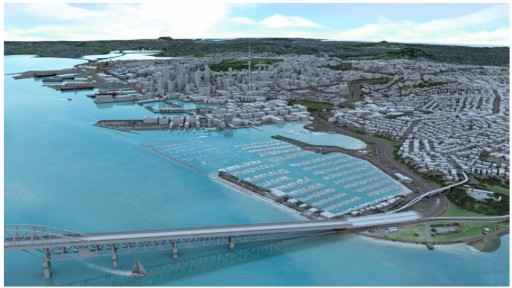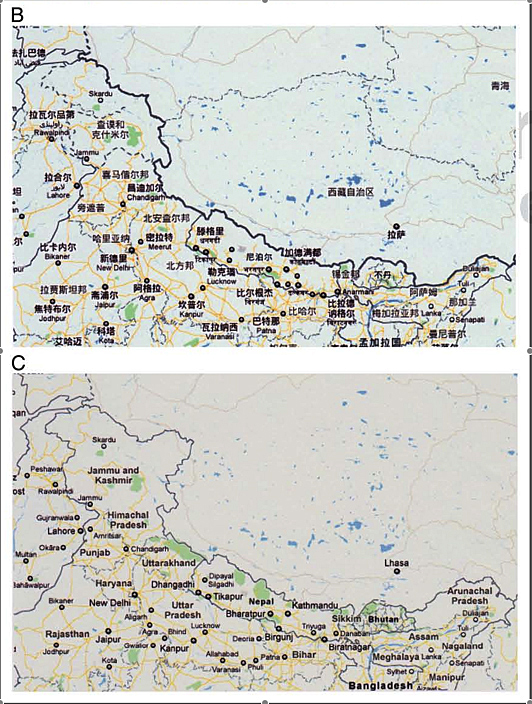Charting the next-generation Digital Earth
July 16, 2012

Handheld consumer devices such as this tablet computer can augment a real scene with data obtained from Digital Earth, such as these underground pipes (credit: NextSpace)
The world has gotten smaller and more accessible since applications like Google Earth became mainstream, says UC Santa Barbara Professor of Geography Michael Goodchild. There is still a long way to go, and there are important steps to take to get there.

A rendering of Auckland, New Zealand, using 3D models of all of its buildings and other built structures (credit: NextSpace)

Two versions of the boundaries of the Himalayas provided by Google Maps in response to queries from (B) China (copyright GS(2011)6020 Google, Kingway, MapKing, Mapabc, TeleAtlas), and (C) India (copyright Google, LeadDog Consulting, Mapabc, TeleAtlas)
Going local instead of global
“There’s no such thing as a true map,” said Goodchild, pointing out three versions of the boundaries of the Himalayas on Google Maps, in response to requests from the United States, China, and India.
Differences in how the applications measure distance are magnified with each new location mapped. These are issues that could make information from digital globes unreliable, even contentious.
“I’m more keen on the next generation going local instead of global,” he said.
Things that happen to be important to those who live in the area should be part of the area’s maps, according to Goodchild, though they may not be the standard political or topographic fare of the traditional globe.
Temporal information — traffic is an example already in use — also proves to be useful and more relevant to users.
However, to take the next steps effectively, the next generation of Digital Earth has to back away from the “exaggerated precision” of the current generation, allowing for uncertainty, and also for the various contexts and environments that a Digital Earth is able to access.
Relationships and linkages between objects need to be developed and refined, and a way of archiving the sheer amounts of data must be developed, says the paper.